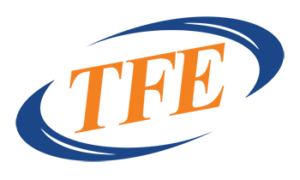Understanding E-rate and how it can help students grow
According to GlobeNewswire, the North American e-learning market is expected to reach $135 billion by 2026. Improvements in the internet’s infrastructure and technologies such as 5G and affordable broadband are the main drivers for the US’s rapid e-learning adoption. Government programs to boost deeper internet penetration and the COVID-19 pandemic have further fueled the e-learning culture. Let’s look at the impact of technology in the classroom and how the government’s E-Rate funding program helps schools build high-speed information systems.
Benefits of using technology in learning
Technology plays a big role in modern learning as more students and educators alike integrate the internet and other digital tools into the curriculum. Here are the three main ways technology enhances learning:
Improves knowledge retention
Learning through digital mediums such as video, interactive media, and animation is more engaging than reading plain boring text. Tech makes studying more fun and enjoyable for students and much easier for the teacher to push a point across. In the end, this results in higher knowledge retention rates and faster delivery.
Encourages learning-based collaboration
With digital capabilities, it becomes easier for teachers to personalize learning experiences for individual students. Students can learn at their own pace while the teacher checks on their progress, actively participating in the students’ journey. Student forums, online classes, and other interactive virtual learning features can also foster productive social bonds and teamwork among peer students. Plus, teachers can interact with students anytime, from anywhere, opening doors for remote work, distant learning, and online tutoring.
Diversifies education content
The nature of educational material has remained unchanged for decades. But technology brings newer and more creative options to source, create, and structure learning material. Educators can adapt any type of digital learning content based on the styles that resonate with a given classroom or student. This helps accelerate learning even in students struggling with cognitive or personality disorders such as dyslexia, dyspraxia, autism, and ADHD.
E-Rate funding to boost e-learning in schools
E-Rate funding is a federal program that provides up to 90 percent discounts to help eligible K-12 schools and libraries fund telecommunications and tech-based investments and projects. The Universal Service Administrative Company administers the fund under the Federal Communications Commission’s directives.
Eligible products and services for the E-Rate program fall into two categories. “Category 1” comprises telecommunications services, such as phones and VoIP, and internet access services. Internal broadband connections, including Wi-Fi and LAN/WAN, and their maintenance fall under “Category 2.”
Any K-12 institution can apply for E-Rate funding, even non-profit schools with an endowment not exceeding $50 million. Here are the steps to follow for a successful funding request:
- Open a competitive bidding process by filling out Form 470.
- Wait 28 days for the USAC to review bids.
- Submit Form 471 and copies of signed contracts with the vendor.
- Get a written funding commitment from the USAC.
- Invoice the USAC for the discount or reimbursement after installing the equipment.
The E-Rate calendar is a year-round event that begins on July 1 and ends on June 30. It’s important to plan ahead to match your deployment schedule with E-Rate’s timeframe and deadlines.
The E-Rate program aims to level the digital playing field for schools by providing the means to affordable, high-speed internet and Wi-Fi connections and advanced telecommunications systems. E-Rate funding is a great way to upgrade your institution’s digital standards and enhance the e-learning experience for both teachers and students. You don’t have to pay a fortune for high-performance broadband infrastructure; take advantage of the government’s generous offer.










